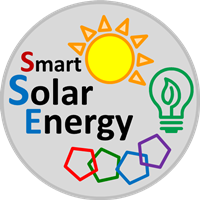Abstract
Project information in RGC website:
http://www.ugc.edu.hk/eng/rgc/funded_research/layman/theme/trs3_lay_sum.html#201_13
The fast-growing demand for energy and the recognition of man-made global climate change underscore the urgency of developing clean and renewable energy resources to replace fossil fuels. Harvesting energy directly from sunlight by using photovoltaics (PV), photocatalysis, artificial photosynthesis, and other enabling technologies is a promising way to meet such requirements. As an alternative to conventional PV cells based on crystalline silicon wafer, vacuum-deposited CIGS and CZTS thin-film PV cells as well as solution-processed inorganic and organic thin-film PV cells offer processing advantages that will likely enable low-cost, high-throughput, and large-area PV production. Furthermore, the development of efficient and smart energy storage systems is imperative to effectively ensure reliable energy supply and increase the penetration of solar energy utilization. To sustainably utilize solar energy, intelligent power distribution grids need to be locally developed for solar energy generation, storage, and utilization at affordable cost and with enhanced security of supply through flexible transition between grid interconnected and islanded operating modes. All of these issues are in line with the strategic objectives on sustainable development outlined by the Hong Kong Government in 2005.
The proposed research scheme is aimed at the aforementioned strategic objectives through exploring various approaches in solar energy harvesting, storage, and utilization, to increase solar penetration to 10% in a selected campus building microgrid system under grid interconnected operation, and more importantly explore the feasibility of enhancing local security and independency of electricity supply of the microgrid through solar enabled islanded operation by end of 2017. The merit of this scheme lies in the fact that solar energy harvesting, storage, and utilization are holistically considered and thereafter they will be meticulously investigated.
Accordingly the research topics covered by this scheme include:
(1) the development of high-performance vacuum deposited thin-film PV devices and modules with new materials and processing techniques, particularly based on earth-abundant materials;
(2) the establishment of an interdisciplinary research platform for fundamental research in solution-processed thin-film PV devices and modules based on inorganic and organic active materials, as well as the development of novel light-trapping schemes for efficiency enhancement;
(3) the exploration of novel metal-oxides and organic dyes for chemical fuels production via artificial photosynthesis and photocatalysis;
(4) the development of new materials and processing approaches for high energy-density batteries and supercapacitors, so as to realize a hybrid storage system;
(5) the development of advanced strategies to integrate, manage, and control various subsystems based on information and communication technology (ICT) infrastructure and protocols, so as to enhance the performance and security of solar-enabled microgrids under various operating modes;
(6) the practical demonstration of microgrid (MG) operations based on intelligent control and integration of PV modules, smart storages and loads and other technologies in a laboratory and selected campus building systems under interconnected and islanded modes.
Hong Kong has demonstrated its uniqueness and strengths in development of high-performance PV technologies, but not yet in the development of smart electricity storage and distributed grid systems. The proposed theme aims to strengthen the competitive edge of Hong Kong in solar energy technologies and their market penetration by combining the newly developed PV modules with the intelligent system integration. It is anticipated that the theme will not only create an interdisciplinary research platform for fundamental studies on solar energy harvesting, storage, and utilization, but also advocate applied research (e.g. development of flexible PVs) that leads to technology transfer to industry. The impact of the theme will be reflected in excellent R&D personnel training and generation of publications in leading journals, invited lectures at international conferences and intellectual properties that will benefit high-tech industry. All these will eventually lead to the formation of an area of excellence as well as to the substantial technology transfer of solar energy technologies in Hong Kong and beyond.
隨着人類對能源需求的快速增長以及使用傳統化石燃料所導致的全球氣候惡化,人類急需開發和利用潔淨可再生能源以代替化石燃料的使用。從太陽光獲取能源是一種非常有前途的方式來滿足這些需求。具體的實現途徑有光電轉換,光催化,人工光合作用和其他太陽能捕獲技術。其中,使用太陽能電池實現光電轉換是利用太陽能的一個主要方式。相對於傳統的硅基太陽能電池,真空沉積技術製造的銅銦鎵硒和銅鋅錫硫薄膜太陽能電池和基於溶液製作流程的無機和有機薄膜光伏電池使得低成本,高產量和大面積太陽能電池組件的生產成為可能。進而,為保障可靠的電力供應和增加太陽能利用的廣度與深度,高效及智能化的能源存儲系統亟待發展。同時,為了可持續地利用太陽能,人们必須建立區域化的智能配電系統以保障能源的產生和存儲,及低成本的使用。此外通過靈活的電網互聯调配和孤島運行模式之間的有效轉換,从而實現更為安全可靠的電力供給。所有這些研究目标都與香港特区政府於2005年擬定的可持續發展綱要密切相关。
我們所提出的研究計劃緊密围绕香港特区政府的可持續發展綱要,亦即開發多種途徑以實現太陽能的有效轉換,可靠存儲和使用。總體而言,我們將研究在微電網互聯運行模式下實現校園選定建築物10%的電力供給。進一步,我們將在2017年底前探索微電網孤島運行模式下太陽能供電的區域安全性和獨立性。我們提出的微電網運行模式其優勢在於全方位地考慮太陽能的轉化,存儲和利用。本計劃擬研究如下課題:(1)開發高性能的真空沉積的薄膜太陽能電池結構和組件技術,著重於新材料(尤其基於自然界中富含元素的光吸收材料)和新的工藝技術。(2)建立跨學科研究平台,開展無機和有機光伏活性材料,溶液工藝製作的太陽能電池和組件的基礎研究;同時開發新型的光採集形式以提高電池的光電轉換效率。(3)開發新型的金屬氧化物和有機染料分子, 从而在化學燃料的合成中實現高效的人工光合作用和光催化。(4)開發新材料和新工藝技術以實現高能量密度的蓄電池和超電容,及由此構建的混和存儲系统。(5)開發基於先进信息和通訊技術的基礎設施和傳輸協議以實現集成,管理,和控制各種子系統,從而增強太陽能技術和微電網系統在各種運行模式下的性能和安全性。(6)在實驗室和校園選定的建築物內進行基於智能控制,一體化的太陽能組件,智能存儲和電力使用,以及與其他技術相結合的微電網運行以及實際應用示範。在此,我們將試驗互聯和孤島兩種模式的微電網運行调配。
香港已經具備利用太陽能的獨特地理優勢以及高性能太陽能技術的開發和研究能力,但是在智能化電力存儲和配電系統方面的研究仍為空白。我們的目標在於通過結合本研究計劃所開發的光伏組件技術和智能集成系統來增強香港在太陽能技術方面的競爭能力和扩大其太陽能在能源领域的实际使用率。我們提出的基礎研究,技術開發,和實際應用的技術途径,不僅能夠創建在太陽能採集,存儲和應用方面的跨學科研究平台,也能夠促進面向工業技術轉化方面的應用研究,比如柔性光伏組件和微電網的開發。本研究計劃的影響力將表現在:優秀研發人員的培養,國際頂尖雜誌論文的發表,國際會議的邀請報告和講座,以及有助於發展高新科技產業的知識產權的获取。總之,這些研究目标的最終實現將使香港成為一個在太陽能技術方面具有核心競爭力的區域,同時也期望在香港本土及全世界範圍實現可觀的太陽能技術的轉讓。
Copyright © 2014 Faculty of Engineering, The Chinese University of Hong Kong. All rights reserved.
